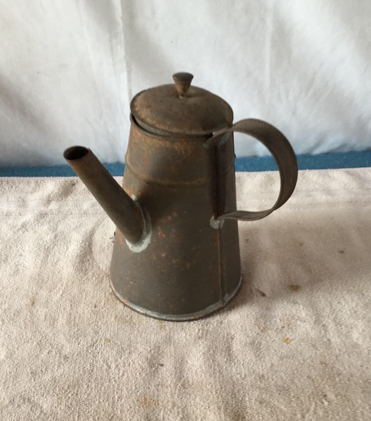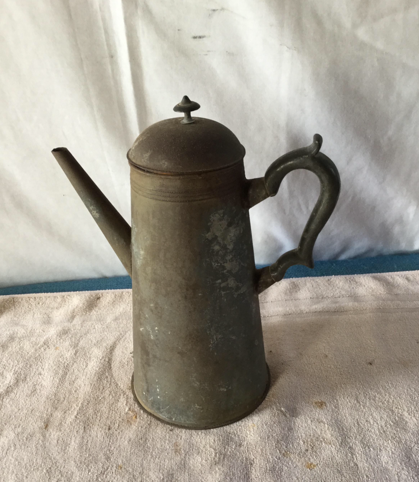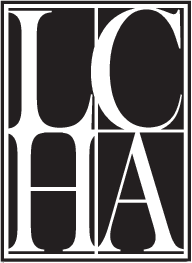Warm Drinks
During the colder months—or even during the warmer months on a cool morning or chilly evening—a warming drink, made in a nice bright tin utensil, rather than the usual black cast iron, was a fine thing!
Until after the American Revolution it was illegal to have a rolling mill to produce the tin sheets needed to produce utensils, lanterns etc. Thus, the tin plate had to be imported before being sold to local tinsmiths. The items they made and sold were thus not cheap – but were welcome additions to any kitchen. Aside from their brightness, they are fast and efficient transferrers of heat – water will boil a lot quicker in a lidded tin container than in an iron one – an extra consideration for wood conservation.
The two items pictured here have tarnished over the years, but would still be perfectly functional. One was typically used to make hot chocolate, while the other was used for coffee.


The two different forms were the norm for the two different drinks. The question is why? They both have to be poured and the angle of the wrist doesn’t make a lot of difference, at least to me. But so far nothing that I can find indicates why the chocolate pot’s spout went from 180 to 90 degrees of the handle. Perhaps one of our readers can shed light on this!
Tea was prepared totally differently- the water boiled (in a tin boiler) and then the hot water poured over the leaves to steep in a china, pottery, or silver pot. There is a theory as to why the tea and coffee pots changed shape is that the countries of origin of each drink played a part. Essentially, coffee pots and cups resembled those used in Arabic coffee houses, while tea pots and teacups resembled those used in Chinese tea rituals.
Perry Palmer, LCHA Collections Committee

 Newsletter
Newsletter Join LCHA
Join LCHA Donate Now
Donate Now